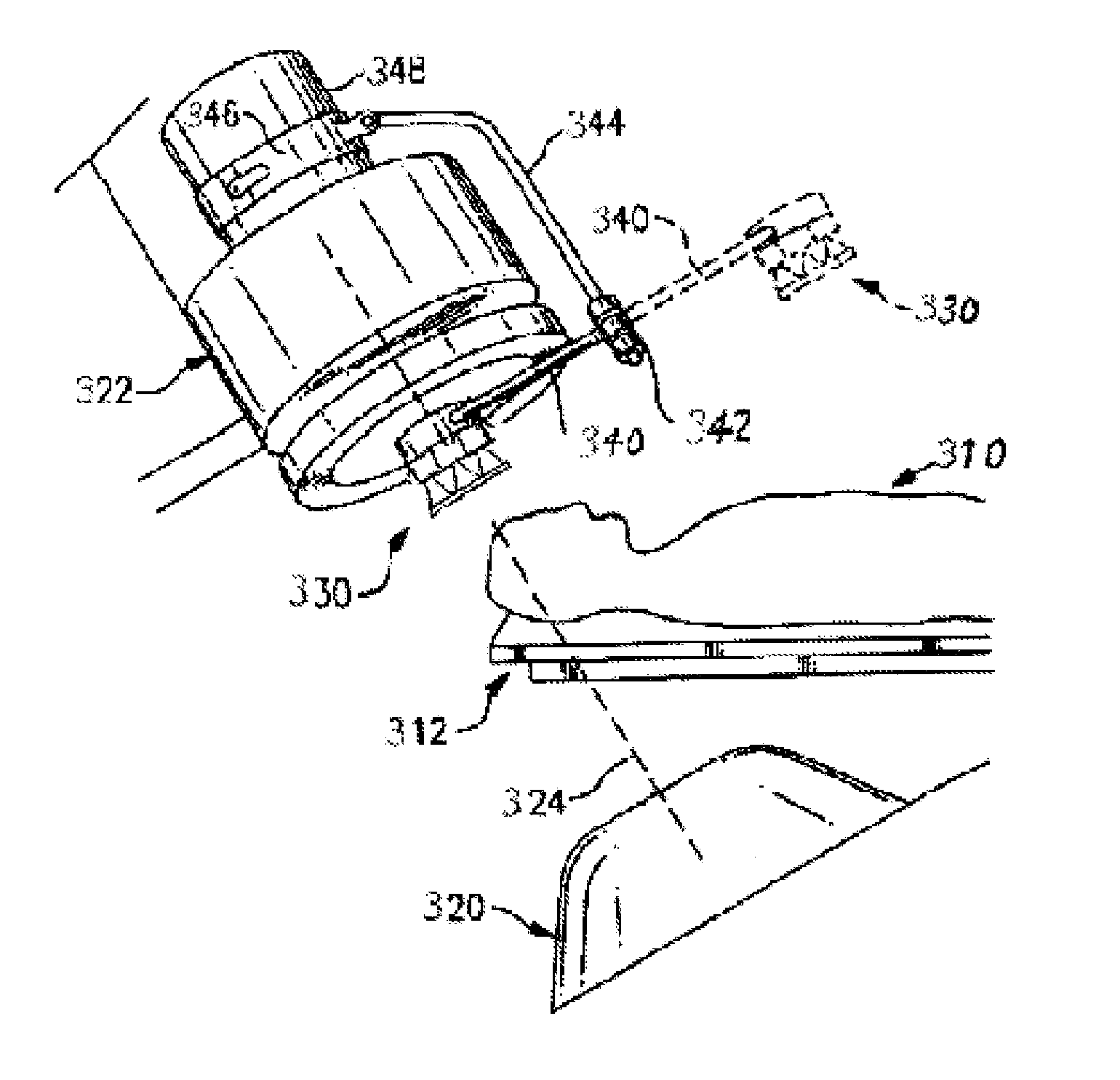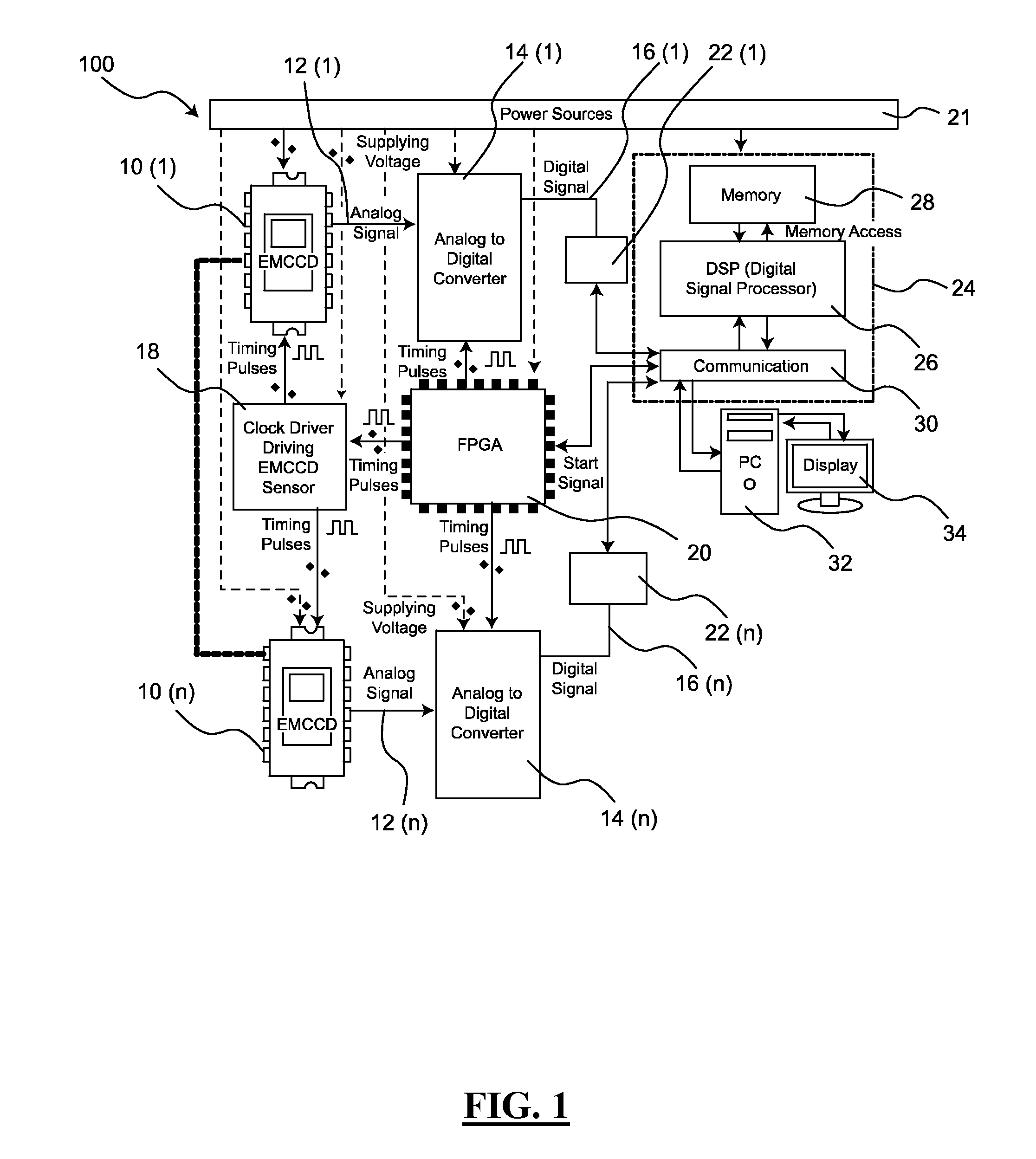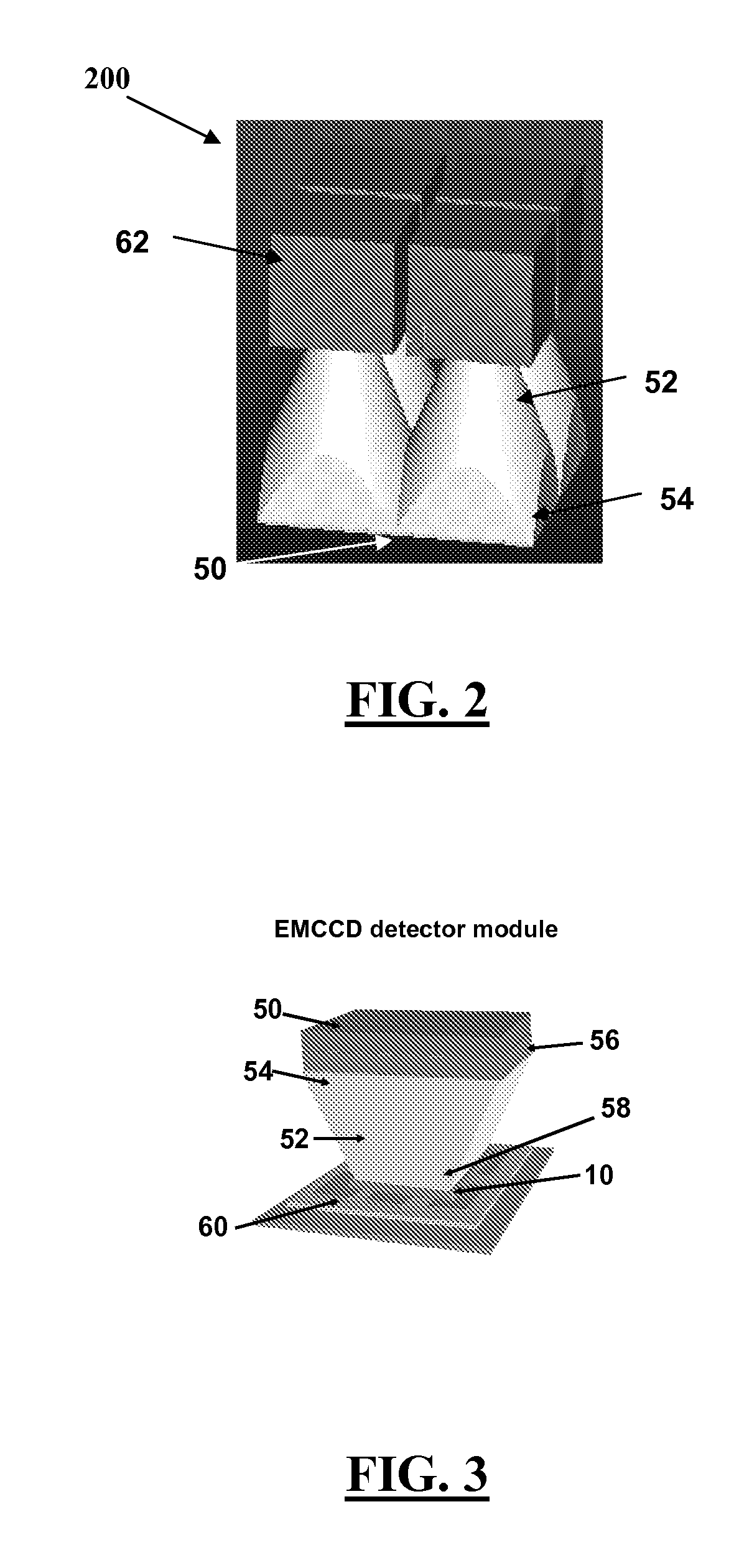Imaging array data acquisition system and use thereof
a data acquisition and imaging array technology, applied in the field of dynamic imaging system, can solve the problems of physical cumbersomeness, various distortions, backburner status, and disappointment in fluoroscopic applications, and achieve the effects of reducing instrumentation noise, reducing instrumentation noise, and reducing the size of pixels
- Summary
- Abstract
- Description
- Claims
- Application Information
AI Technical Summary
Benefits of technology
Problems solved by technology
Method used
Image
Examples
example 1
Prototype Solid State X-Ray Imaged Intensifier (SSXII)
[0077]A prototype EMCCD camera system (Photonic Sciences Limited modified CoolView camera, East Sussex, UK) modified with a fiber-optic plate (FOP) window for the 1004×1002 TC285SPD chip that was used was created as described in Kuhls-Gilcrist et al., “The Solid-State X-ray Image Intensifier (SSXII): An EMCCD-Based X-ray Detector,”Proc. Soc. Photo. Opt. Instrum. Eng. Medical Imaging 6913-19 (2008), which is hereby incorporated by reference in its entirety. The EMCCD camera was delivered with a thin removable GOS phosphor and a few random small white spots were noticed on the images, which subsequently were found to be direct x-ray absorption in the EMCCD. The GOS was subsequently replaced with a 350 μm thick CsI(Tl) FOP module and the resulting images were free of these artifacts. The CsI module was optically coupled directly to the EMCCD FOP and images were obtained that exceeded expectations. For example, FIG. 6 demonstrates th...
example 2
System Construction for a Single Modular Device
[0081]To have the most flexibility in building an optimized imaging system, it must be possible to control the design aspects at the component and system level. Thus, construction of a prototype system from components that could be extrapolated to the final system was initiated. A modular device based on a CCD chip, the Texas Instruments TC237B, that has similar architecture to readily available EMCCD chips, the TI TC247SPD and the TC253SPD, was created. The TC253SPD is a frame transfer chip nominally with 680×500 pixels of which 658H×496V are active with 7.4 μm square pixels while the TC247SPD has 10 μm pixels. The TC285SPD EMCCD has 1004×1002 pixels. All have similar clocking pulse specifications; however, the TC247SPD, TC253SPD, and TC285SPD have additional multiplying elements and hence additional pins for the control voltage that determines the “charge carrier multiplication” or gain as well as for the optional Peltier cooler that ...
example 3
2×2 SSXII Array
[0083]To achieve larger fields of view, an array of modular devices as indicated in FIG. 2 will be designed such that the phosphor layer is contiguous, just as in all current XII and FPD imagers. The rationale for the 2×2 array using Photonic Science Ltd. (East Sussex, UK) or similar cameras is that the PSL camera was shown to work well in Example 1. A National Instruments (NI) 1429 frame grabber board, which can achieve 30 fps for 1024×1024 matrix images with no binning, will be used (the NI 1430 has two CameraLink inputs per board) together with a high speed PC to achieve 30 fps acquisition rates for the SSXII 2×2 array.
[0084]To build the 2×2 SSXII array, the four cameras will be mounted onto an array of FOTs. One way to assure that there is the smallest separation or image area loss between modular devices is to pre-assemble the FOTs into an array by bonding them together after the sides are ground but prior to grinding the input surface to enable either plating of...
PUM
| Property | Measurement | Unit |
|---|---|---|
| sizes | aaaaa | aaaaa |
| thick | aaaaa | aaaaa |
| length | aaaaa | aaaaa |
Abstract
Description
Claims
Application Information
 Login to View More
Login to View More - R&D
- Intellectual Property
- Life Sciences
- Materials
- Tech Scout
- Unparalleled Data Quality
- Higher Quality Content
- 60% Fewer Hallucinations
Browse by: Latest US Patents, China's latest patents, Technical Efficacy Thesaurus, Application Domain, Technology Topic, Popular Technical Reports.
© 2025 PatSnap. All rights reserved.Legal|Privacy policy|Modern Slavery Act Transparency Statement|Sitemap|About US| Contact US: help@patsnap.com



